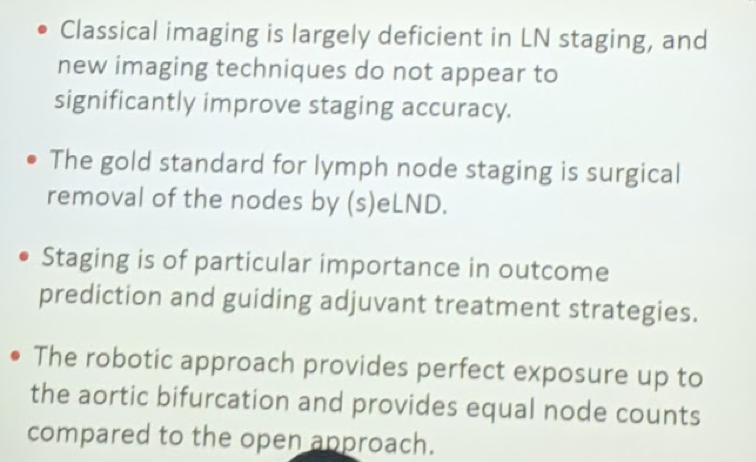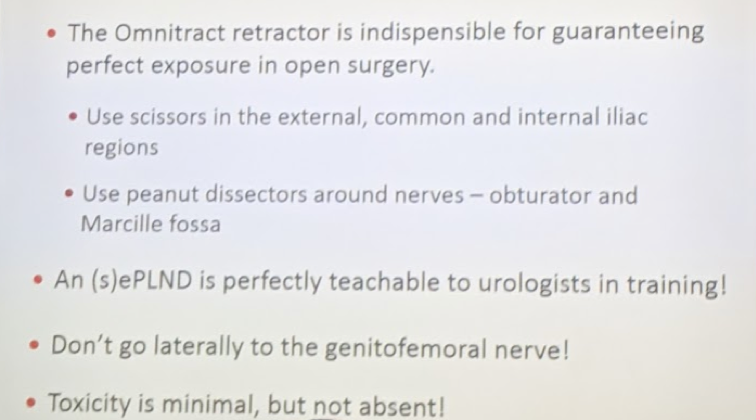Below is the full template of a super-extended PLND, done for a clinical trial:

He notes that he does not routinely do a sePLND, but will do an ePLND.
What do the EAU guidelines say about performing a PLND at the time of RP?
- Low-risk localized PCa – PLND can safely be omitted
- Intermediate-risk localized PCa – ePLND should be performed if the risk of LNI is > 5%
- High-risk localized PCa – ePLND should always be performed
Is there a specific node count required? NO. But, more nodes means better staging. A study by Abdollah et al. (JUrol) demonstrated that <8 nodes removed resulted in <50% correct staging, but > 20 nodes removed results in > 90% correct staging1.
He first started with a case of a man with high-risk localized prostate cancer with negative standard staging studies enrolled on a trial assessing PSMA PET imaging. Therefore, it required sePLND. He then showed key clips of a robotic sePLND (up to aortic bifurcation) that demonstrated the feasibility of this approach. He provided some tips along with the way, but ultimately, a split-and-roll is needed over the external iliac vessels, a dissection posterior the vessels is key to needed for maximum dissection. He also pointed out the need to be careful of the plexus when completing the sacral node dissection.
In his second case, he was operating on a patient with high-risk cT3aN1 prostate cancer, which approached openly. He did note that his fellows do most of the node dissection at this time and that an ePLND and sePLND is something that can be taught safely. His approach open is similar to robotic, though he used a peanut for dissection often. He didn’t add too much to this video as visualization was less than for the robotic PLND video.
His last point, sacral plexus injury or shock in this group has resulted in slow continence and potency recovery in these patients – with maximal recovery coming at 3 years for some patients.
His take-home slides:


Presented by: Steven Joniau, MD, PhD, Department of Urology, Universitair Ziekenhuis, Leuven, Belgium
Written by: Thenappan Chandrasekar, MD. Clinical Instructor, Thomas Jefferson University, Twitter: @tchandra_uromd, @TjuUrology, at the 16th Meeting of the European Section of Oncological Urology, #ESOU19, January 18-20, 2019, Prague, Czech Republic
References:
1. Abdollah et al. (JUrol)


